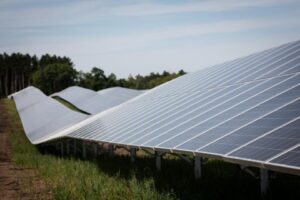 COVID-19 has led to lock-downs. That, in turn, has led to less energy use, creating an opportunity for renewables to shine. They are becoming the lowest-cost energy source on sunny days, although during the evening when electricity demand is high, power prices are spiking.
COVID-19 has led to lock-downs. That, in turn, has led to less energy use, creating an opportunity for renewables to shine. They are becoming the lowest-cost energy source on sunny days, although during the evening when electricity demand is high, power prices are spiking.
But there is a fix: utilities and onsite generators are using energy storage to harness the electricity during the day and release those electrons at night. Those batteries not only can limit the price spikes but they can also add value to solar farms. The twin goals are to increase renewable power usage and to provide electricity during peak demand. But the main obstacle is the high price of storage. The options?
“If low electricity prices remain, what will it mean for future the grid and the electricity market?” asks Matt Harper, chief commercial officer for Invinity Energy Systems that makes “flow batteries.” “Battery storage can take advantage of abundant and low-cost power: it consumes excess power during the day and redeploys that electricity during the peak periods when conventional power generation would be turned on.”
Harper explains that “flow batteries” are different from “lithium-ion batteries.” The former provides long-term storage that can deliver power for up to 15-hours while the latter supplies electricity for shorter periods of four-hours or less. The better performance, he adds, means that renewables have more leverage in the market — something that will eventually mean that power can be stored in the summer and used in the winter.
At the same time, he says that “flow batteries” are positioned between short-term “lithium-ion” batteries and long-term hydrogen tanks. Hydrogen storage, he adds, has limitations because of the fuel’s efficiency rate, which is about 50% — the ability to take a unit of energy input and convert it to electricity. In comparison, he says that the efficiency rate for battery storage is between 70-90%.
When comparing the value of short-term battery storage to long-term battery storage, Harper says that a key difference is that long-term “flow batteries” can be charged and recharged multiple times a day for decades at a time. Short-term lithium-ion batteries, in contrast, will wear down and lose their function in 10 years. That means the value of flow batteries over a lifetime is worth more, Harper adds, even though the lithium-ion batteries are less expensive upfront.
“The COVID-19 pandemic shows what electricity markets will look like 3-5 years from now,” says Harper. “The drop in demand means that the market-clearing prices have, correspondingly, gone down. The result is that the renewables are winning because they have the lowest cost of production.”
Source: “Battery Storage Is Delivering Value For Solar Developers And Energy Consumers. But What About Cost?”, Forbes
